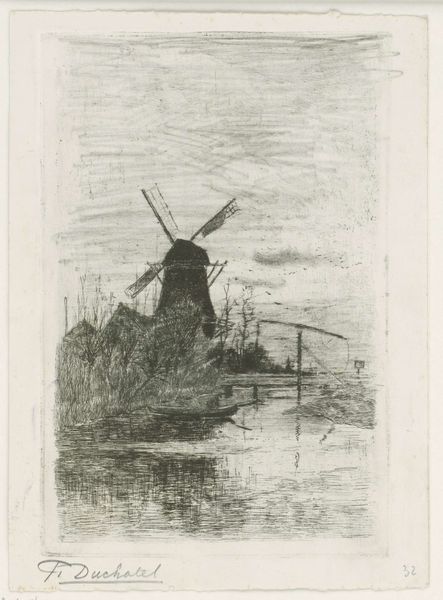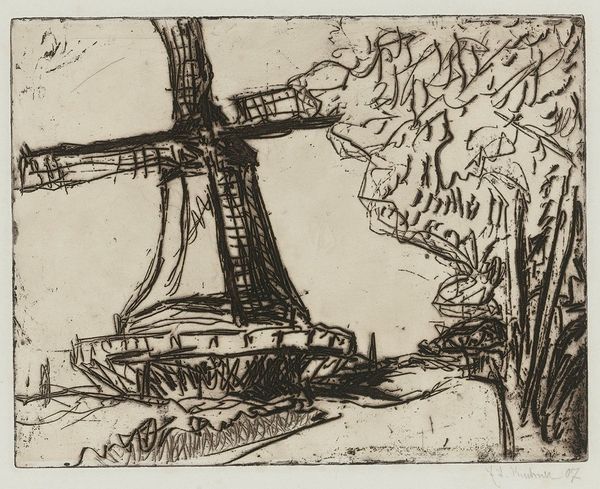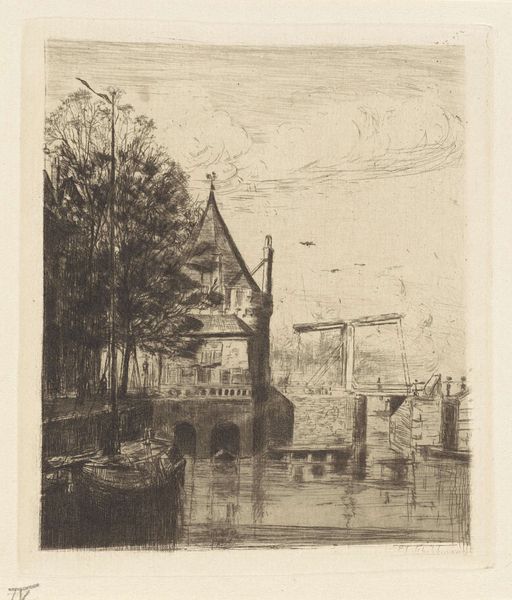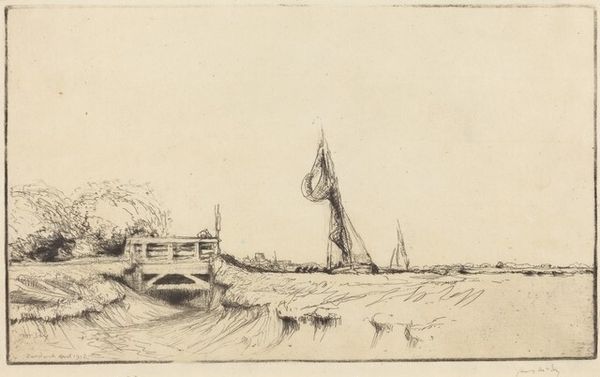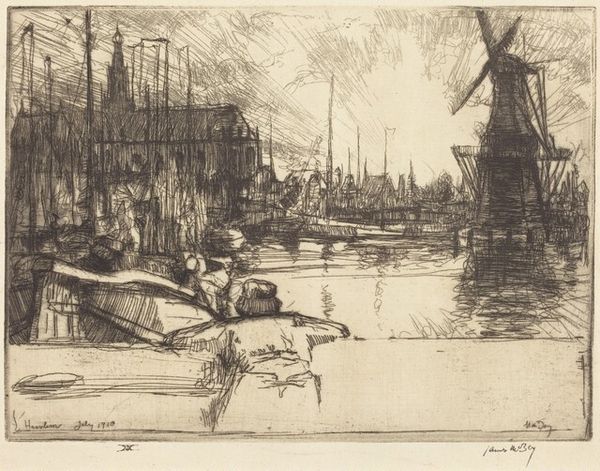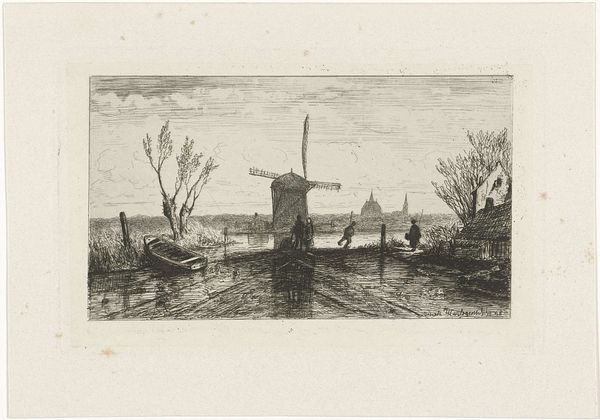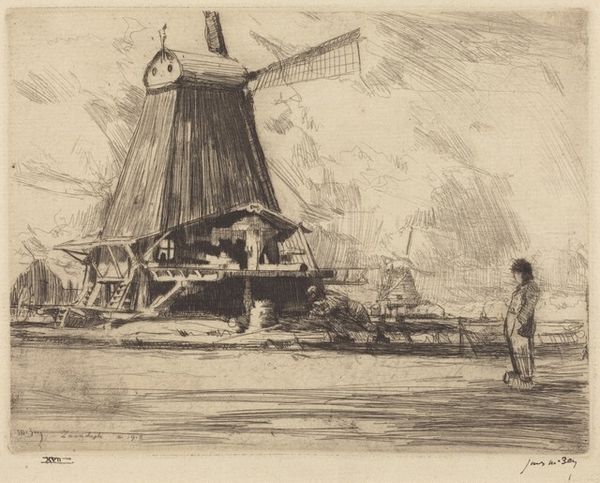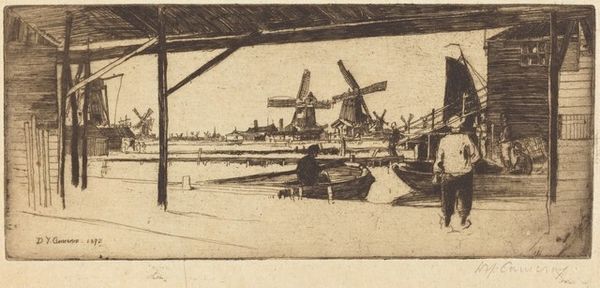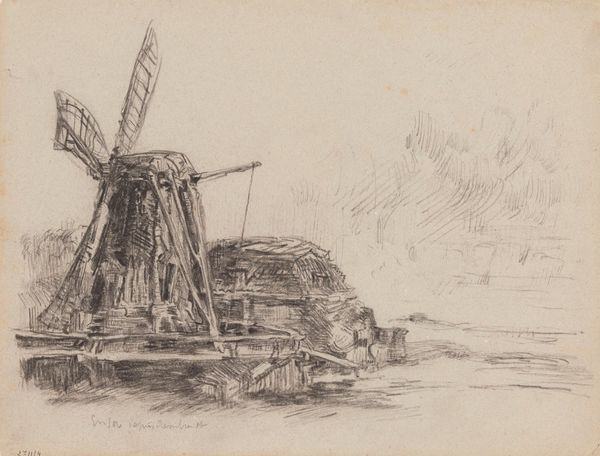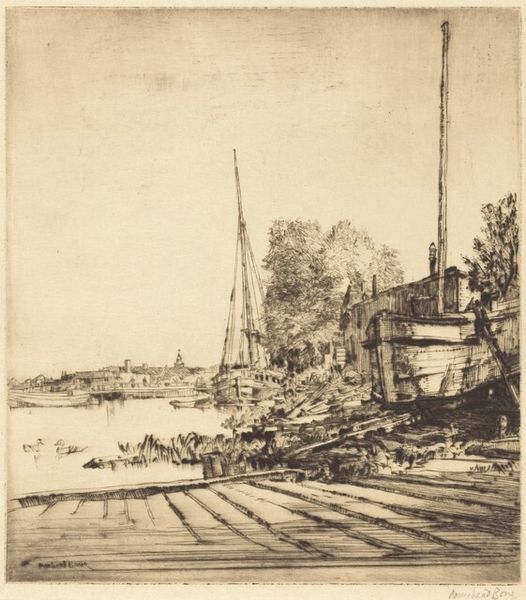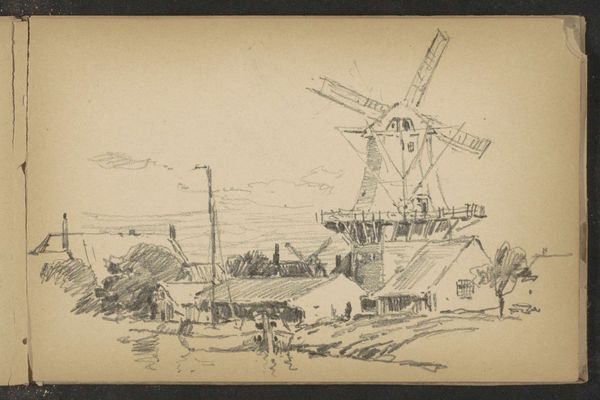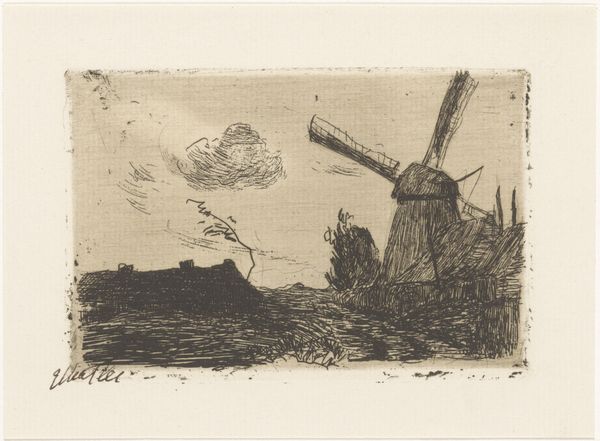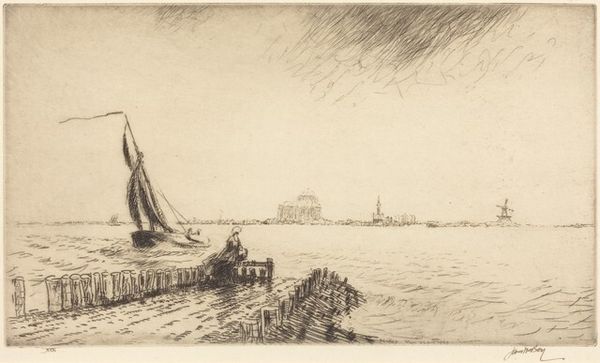
Copyright: National Gallery of Art: CC0 1.0
Editor: Here we have James McBey’s etching, "Monnickendam Sawmill," from 1910. It’s such a detailed print; you can almost feel the breeze coming off the water. What strikes me is the prominence of this imposing windmill against such delicate, almost ephemeral lines. How do you interpret this work? Curator: It’s interesting that you pick up on that contrast. Looking at it through a historical lens, the image evokes the idealised Dutch landscapes of the Golden Age but done in an impressionist style. McBey positions himself in a complex conversation. What is he trying to tell us about the role of the past in contemporary culture? What does this “mill” as technology evoke for 1910 viewers, versus seventeenth-century patrons? Editor: That’s a great question. So you're suggesting that he is using the familiar landscape as a commentary? Almost like he is asking what aspects of this landscape do we, the viewer, hold dear, and why? Curator: Precisely! It prompts reflection. In 1910, industry was changing landscapes rapidly. By evoking a beloved historical style, McBey encourages viewers to question these transformations. Was this etching meant to affirm progress, or to lament a changing world? The proliferation of such images suggests there was an audience for both readings. Editor: It makes you wonder who bought these prints, and how they displayed them! It adds a whole layer of meaning to it. I hadn't thought of it like that at all, thanks. Curator: You're very welcome! Thinking about art as part of a wider cultural conversation opens up new avenues for interpretation.
Comments
No comments
Be the first to comment and join the conversation on the ultimate creative platform.
